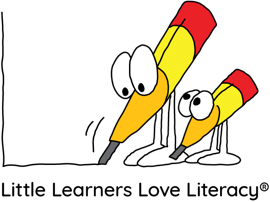Newsletter
A short sentence describing what someone will receive by subscribing
Newsletter
Ask the Author: Berys Dixon's favourite nonfiction book?
By Berys Dixon
 The Little Learners team have asked me to choose my favourite book from the Little Learners, Big World nonfiction series. This is a difficult request. Each book I have written is, for one reason or another, a favourite.
The Little Learners team have asked me to choose my favourite book from the Little Learners, Big World nonfiction series. This is a difficult request. Each book I have written is, for one reason or another, a favourite.
Stage 1, The Cat

The Cat stands out as proof that an informative and entertaining book can be written with just 8 letters comprising six different decodable words and the Heart words ‘I’ and ‘the’.
Contrasting and comparing the wild and the domestic cat was an idea that came to me while sitting in the sun watching the antics of my own cat! This was a way to take children beyond their own backyard and into the broader world, gaining an understanding that wild as they are, lions, tigers and jaguars are all part of the feline family with similar needs and behaviours as the cats we have as pets.
From there, children may explore other species of wild cat, different breeds of domestic cat and the environments they inhabit. Then they may start to investigate wild and domesticated dogs and from there, wonder why so many people have pets and what animals make good or not so good pets.
Much as I enjoy solving the challenge of writing a decent text with strict limitations on letters and words, it is always a relief to move on to the next stage with just a bit more wriggle room to share fascinating facts about a subject.

So it was with great pleasure that I wrote the Stage 5 and 6 texts with their wider range of decodable words. Surprisingly, along the way, I have learnt a lot about this amazing world myself - the bedtime habits of ducks and hens - hens happily put themselves to bed, while ducks need to be told; the incredible fish I’d never heard of - fish with snot shields; fish with humming abilities and a fish with red lips that can walk!

Then there are the insects - the mantis with its revolving head; the incredible strength of ants; and the scientific name for a stick insect -

Phasmid (discovered with great delight because it gave us another ph word!).
Stage 6 Ring That Bell!

But among these texts, Ring That Bell, stands out. Firstly, because it is so surprising to realise how many bells are out there playing a part in our lives, and also because bells have been a part of civilisation for over 5000 years! Bells come in all shapes and sizes; some are tiny, some are enormous and some are very beautiful. Bells are used for many purposes - for celebrations, as warnings, in religious ceremonies, to wake us up, for good luck, to gain attention, as musical instruments and just for good fun! In this book, there are more than 15 bells either written about or pictured and I still didn’t cover them all. As a Melbournite, I am ashamed to say I left out tram bells!

After reading this book, children could go on a journey of discovery, becoming aware of bells that play a part in their own lives and then exploring further afield, in museums and art galleries for example, as well as investigating weird and wonderful bells on the internet. But what they will most enjoy, I hope, is playing the tune provided at the end of the book and perhaps composing some songs of their own or even inventing their own beautiful bells with bits and pieces around the house!
Sample Book: You can be the first listen to Ring That Bell!
Click below to listen to Berys read her book and play the bells ....

Berys Dixon is both an experienced teacher and writer. Berys wrote the Pip and Tim stories for Little Learners Love Literacy Stages 5-7, as well as The Wiz Kids series and a number of other teaching resources and games. Berys always dreamed of being a writer – she loves writing and children love her stories. She has an amazing imagination and a talent for writing natural-sounding, engaging books within the tight restrictions of a phonics scope and sequence. Berys has also written the Pocket Rocket series and continues to tutor students alongside her writing.
Related Articles
Reading and learning at home
If you are new to LLLL, you might be wondering what you should be sending home instead of a...Anita's Clay Lesson!
STOP PRESS! I’ve finished writing all my book manuscripts for Stage 7 of the Little Learners, Big...Subscribe to our newsletter
Stay informed on the latest products, events, catalogues, resources and inspiration.
Newsletter
100% free, Unsubscribe any time!
Subscribe to our Newsletter
Stay informed on the latest resources, professional learning, events and more!
Contact Customer Support
We're here to help you - email or call us with your query.
Subscribe to Our Blog
Get latest insights sent straight to your inbox.
